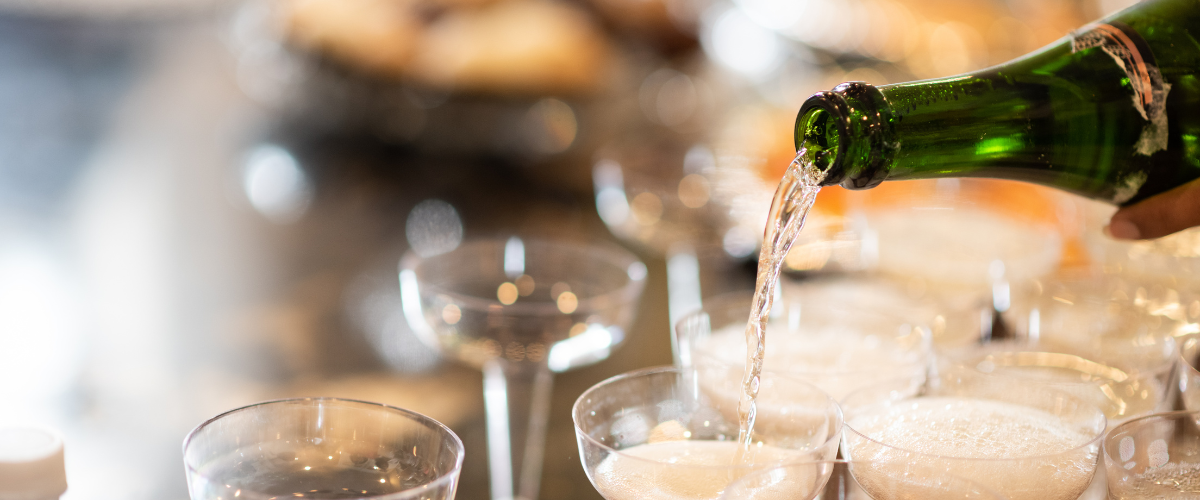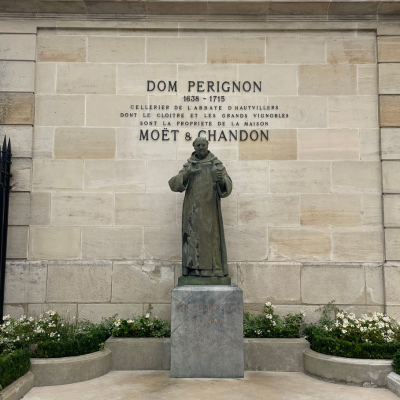5 Facts About Champagne that May Surprise You

Winston Churchill had a glass every day at 11am
by Erin Henderson
I've just returned from a trip to France which included a stop in Champagne.
I was there for about three-and-a-half days, which is about a half-day more than you need in the quiet, farming region, 150 kilometers north-west of Paris.
This is not a slight against it. Not by a long shot. I love quiet, country living. I stayed in a beautiful house in the teensy-weensy village of Brasles, about an hour's drive from the main city of Reims. It would be incorrect to say Brasales is a one-road town, there are a few roads, but sleepy ones at that. Once, when backing out of the driveway, we had to wait for a line of five cars to go by. It was rush hour.
When I arrived in Champagne, my first time ever in the region, I expected to arrive at an on-going Gatsby-esque party filled with fabulous people swilling bottomless flutes of bubbly. Instead, I discovered a gently rolling patchwork of farmers’ fields dotted with bright white cows, Clydesdale horses, and the occasional fluffy sheep. Mists filled the valleys every morning in a Brönte-esque scene, and the silence of the crisp, dark nights was only broken by the echoing call of an owl.
You may also like: 10 Sparkling Wine Terms You Need to Know
Of course, things are a little different in the cities of Reims and Epernay, the two big urban centres of the region. But not by much.
In Reims, the interior historical centre is a charming scene straight from central casting, with the soaring, 800-year-old Notre Dame Cathedral that began construction in the 1200's and was finally complete 100 years later, as the symbol of the city. There are also a few other landmarks for history buffs such as the art deco library financed by Andrew Carnegie, and the room where the Germans signed the declaration of surrender after WWII; it has been left exactly how it was on May 7, 1945. However, outside of the historical centre Reims is slightly worn, like it could be the inspiration for a gritty Bruce Springsteen song.
Epernay is smaller than Reims, but my favourite of the two. It has a quaint village feel throughout the city, and in the centre, the awe-inspiring Champagne Avenue, where some of the most famous Champagne houses in the world are headquartered in sprawling, magnificent structures that are utterly dazzling in their Gilded Age glory.
If you're a wine lover (and I assume that by reading this blog or even being on this website, you must be) Champagne should be on your travel list for places to visit. If you're not, or going with people who aren't, be warned there isn't much else to do, and boredom is sure to set in. And if it were me, I'd leave the kids at home; Champagne, for all its splendour of both wine and historical weight, would just be a cruel punishment for the littles.
You may also like: What's the Difference Between Champagne and Sparkling Wine?

My Biggest Surprises
1. Kimmeridgian soils are tough to see. As a wine teacher, and a perpetual wine student, in Ontario, at least, all we hear about is Champagne’s impressive ancient, fossilized seabeds of bright white chalky soils. I even show a very good video in a sparkling wine class I teach that prominently features these ivory cliff faces. I'm sorry to say I saw almost zero of this famous terroir in my short time in the Champagne region. Instead, there was evergreen forest giving way to farmers' fields in a patchwork of brown and green. Occasionally, I would spot a fingernail sliver of creamy grey rock in the distance, but that was really it. In speaking with someone in Champagne, they mentioned most of the chalk is found about a foot under the rich earth.
2. Everything is closed on a Sunday. Even grocery stores, restaurants, and bakeries. Personally, I like this calming throw-back to yesteryear, but to make the most of your time, I recommend visiting Champagne either as a one day with the fast train from Paris (it only takes 30 minutes by TGV), or take a multi-day trip mid-week.
3. Most businesses also close for an hour (or two) for lunch. Our fabulous tour of Champagne Bollinger was going slightly over the allotted two-hour time frame. Our kind and knowledgeable host was doing her best to supress her gorwing stress, when finally she told us if we wanted anything from the boutique, we had 10 minutes before the entire winery closed for lunch.
4. The grocery stores are fantastic. Give yourself at least an hour to wander and be amazed by the selection. And the prices! Grand Cru butter for €3, organic rotisserie chicken for €8, a pint of chantarelle mushrooms for €4, 500ml of crème fraîche for €5!!! The stores have real wood burning pizza ovens with huge copper chimneys, ginormous cheese caves, entire sections devoted to pâté... I didn't know whether to laugh or cry. And these are standard grocery stores, by the way, not fancy, high-end shops. And I'd like to take a moment to give a special shout to my personal fave, the E. Leclerc near the Reims train station.
5. Baguette machines come in clutch. You heard me: a vending machine for baguette. There was one in the parking lot of the town hall in my village, and it constantly had one or two people popping by to get a baguette on the fly. I know this sounds kindof ick, but with so many locals using it, I thought I'd take it for a spin, just for the novelty alone. And the bread is good! For €1.20 you get a fresh baguette that's not too far off boulangerie quality. (There are also pizza machines that offer up a cold slice in 30 seconds or a hot one in three minutes, but I didn't find them nearly as cool as the baguette machine.)
Your Next Read: Wine Tripping Through Vinho Verde
